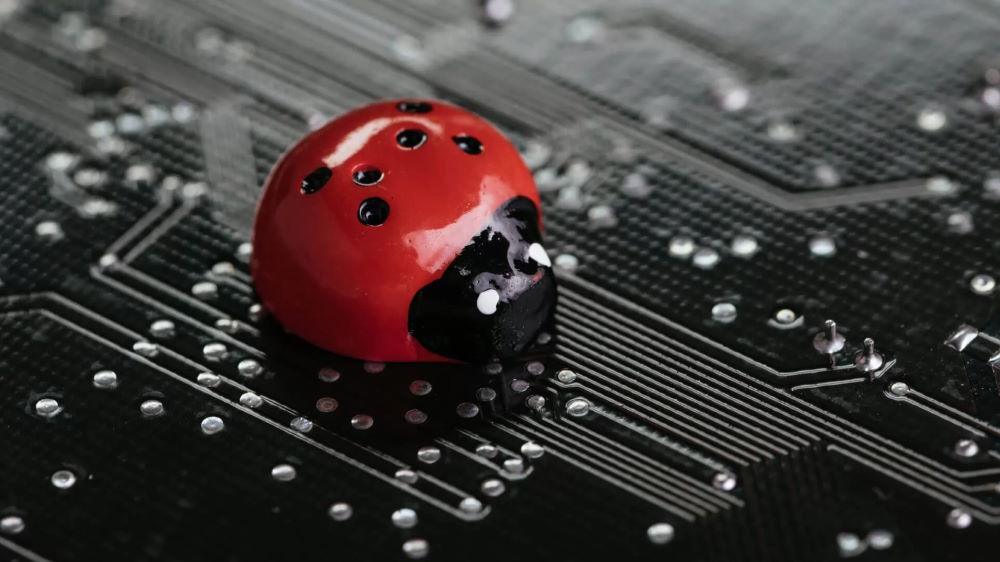
Decoding Software Testing: Navigating the Waters of Stub Vs. Mock

Content Map
More chaptersSoftware testing is projected to reach a market size of USD 45 billion in 2022, growing at 5% every year from 2023 to 2032 due to increased demand for mobile-based applications that enhance program appearance, performance, and functionality across devices. The number presents the vital role software testing plays and that it shouldn’t be overlooked, no matter what stage of the development project.
Unit testing, specifically test doubles, has long been the first line of defense against bugs and errors. Among the intricate landscape of test doubles, this article will zoom in and discuss in detail the nuances between stub and mock. What are their key differences? When do you know which test method to use? You will find all the necessary answers in today’s article.
Test Doubles: A Quick Overview

Definition
A “test double” refers to any replacement item used in software testing to stand in for real or actual dependencies. These substitutes play a crucial role in isolating the unit of code being tested. When a system or process, despite not being inherently error-prone, might have a complexity or consume a significant amount of time during testing, employing test doubles becomes a practical solution.
Test doubles make software development testing easier by replacing real components with controlled ones. This frees developers and QA experts from dealing with the complexity of integrations and lets them focus on evaluating the behavior of the new code.
This simplified method improves testing effectiveness and ensures that requested functionality is evaluated effectively while maintaining a controllable testing environment.
Types of Test Doubles
There are five types of test doubles: stubs, mocks, dummies, spies, and fakes. We are going to discuss stubs and mocks more in the following parts of the article. First, here is a quick overview regarding dummies, spies, and fakes.
- Dummies: The purpose of dummy objects is to pass a system or tester without actually being used. Dummies allow QA professionals to test the connection to the database without verifying data integrity.
- Spies: Spies enable more complicated test scenarios than other types of test doubles. Its name “spy” comes from the fact that it monitors its own status and system utilization.
- Fakes: often used during testing applications with multifactor authentication, fakes simulate different test objects through different implementations. Fakes save QA teams time by validating functionalities.
Tools and Frameworks
Test doubles simplify the complex nature of a unit test. There are several tools and frameworks that you can use for test doubles, depending on the programming language you use. For example, there are Java programmers who can consider JUnit and Mockito, Ruby developers might think of Mocha or Spec, and the list goes on.
Everything You Need to Know about Stub Tests

In order to fully compare mocks and stubs, it is crucial that we fully understand what each type of test double entails.
Definition and Purpose
Think of a stub as a helpful assistant in testing who’s there to give preset answers when needed. It acts like a script-following actor, focusing on showing how the thing being tested behaves rather than getting tangled up in complicated relationships with other parts.
When it comes to simulating real things, a stub is like a stand-in actor delivering fixed responses using a limited set of tricks. Stubs are like fake objects that imitate the behavior of genuine ones, responding only to certain inputs and always giving the same answers in every test. Stubs might seem simple, but they’re great for straightforward tests. For example, in application testing, a stub can step in as a temporary stand-in, helping developers spot issues before the real thing comes into play. This way, developers can make smart changes, ensuring the application is well-prepared for the actual thing.
In a nutshell, stubs are crucial for making testing smoother and understanding specific behaviors in the test code. They’re useful when you want to focus on specific behaviors and make testing more efficient.
Test Lifecycle
Setup
- Identifying the test scenario requirements.
- Prepare objects accordingly.
- Stubs then are integrated into the test suite, either directly linked with the test code or called during specific test scenarios.
Execution
- Testing the functionalities.
- Stubs replace a dependency and provide testers with a predetermined answer.
Verification and analysis
- Stubs are verified to make sure that specific methods are called as planned.
- The unit’s behavior is examined.
- Both the stub and unit are updated if needed.
Resources cleanup
- The ultimate goal is to use stubs effectively in unit tests and ensure that the code is thoroughly examined.
When Are Stub Tests the Most Effective?
It can be hard to determine what kind of scenarios to use stubs in. What you do need to keep in mind is that stubs are used to isolate components of your application from testing. For example, you can use stubs to replace the code that makes writing tests more challenging.
Hence, stubs are most useful when developers need to concentrate on the behavior of the alternative object. In specific, testers use stubs when they need to focus on the object rather than its interaction with other components.
Advantages and Possible Limitations
Advantages of Stubs include:
- Stubs are ideal for Isolating units and narrowing down the test suite, allowing testers to focus on functionality. This also minimizes external factors that might alter the outcome.
- Stubs provide “canned answers,” meaning the test is likely to follow a predictable and repeatable path.
- Free tools and numerous online resources are available for stub tests.
Still, there are some limits to Stub tests:
- Stubs need to be configured properly. If stubs don’t mimic the actual object behavior precisely, it might result in faulty test results, i.e., passing the test when it shouldn’t.
- Since stubs are mostly used to examine behaviors, stub tests might not provide you with detailed information regarding their interactions with dependencies.
Everything You Need to Know about Mock Tests
Purpose
A mock object is a helpful sidekick in testing that keeps track of how different parts of a program talk to each other. It’s a flexible tool that records actions during tests and is excellent for checking if things interact the way they should. Picture it as a detective, Sherlock Holmes, investigating every move in a unit test.
This dynamic tool, often used with the help of programs like Mockito or JMock, is great at making sure certain actions happen in the right order and certain methods are called a certain number of times. You can also use them to check that different Java classes are talking to each other in the way they’re supposed to.
Unlike its cousin, the stub, you can check if mock objects did their job correctly, influencing whether a test passes or fails. Mocks are handy for big sets of tests where each one needs a specific setup, as they help keep things organized within the test.
However, there’s a catch – mocks aren’t easily shareable with a big group because they might not work well in different situations. They also count actions and check how different parts of the program communicate, making them super useful in specific testing situations. But remember, it’s best to use just one mock in a test to keep things focused and effective.
Lifecycle
1. Setup.
- Identifying the test scenario requirements
- Prepare the test objects accordingly.
- Testers define expectations of how the mock object should behave. This includes what methods are used with what arguments and how many times.
2. Execution.
- Testing functionalities
- Mock acts as a double, capturing and recording method calls.
3. Verification and analysis.
- Verify if the expected interactions took place, i.e., if the correct methods were called in the expected order.
- Analyze the mock’s behavior and make any adjustments if needed.
4. Clean up resources.
When Are Mock Tests the Most Effective?
Mocks are objects pre-programmed with an expectation regarding the number of calls expected to receive. Hence, it is best to use it when you need to verify if components interact with one another as expected. In other words, when developers need to specify expected interactions and methods are called in a predetermined order, mock tests are the way to go.
Advantages and Possible Limitations
Advantages:
- Effective in verifying the expected interaction between components.
- They contribute to making sure the stub class is called by the method. As the invocations proceed as planned, you are assured of the collaborative nature of your code.
- Help you find hidden side effects and issues by tracking interactions with genuine objects.
- Many open-source tools and online resources are available.
Limitations of mocks include:
- Relying too much on mocks in tests can make them fragile. If tests are closely tied to the specific details of how mocks are set up or if they require a lot of detailed configurations, even small changes in the code or data setup can easily break these tests.
- Hence, mocks may add further complexity to your test suite and code.
- Developers, not testers, often use mock tests.
Comparing Stub Test and Mock Test
Knowing the difference between stubs and mocks allows one to facilitate efficient software testing. Although they both fall under the umbrella of test doubles, there are clear distinctions between them:
| Stubs | Mocks | |
|---|---|---|
| Purpose | State verification by mimicking behaviors of real objects with preset responses. | Characteristic verification by validating the interactions between the test objects and their dependencies. |
| Testing focus | Behavior outcomes | Component interactions |
| Data source | The data source is hard-coded and closely related to the test suite. | Tests put up data on the mocks. |
| Technical knowledge | Average technical knowledge is needed. | More advanced technical knowledge is needed. |
| Implemented by | Developers themselves | Via third-party libraries like Mockito or JMock |
| Usage | In straightforward test suites where data requirements are simple. | In large test suites where data is complex and configuration is needed within the test. |
| Graphics User Interface (GUI) or User Interface | Stubs don’t have GUI | Mocks have GUI |
Last Note
Stubs and mocks may seem similar at first glance, but they serve different purposes when it comes to testing code. By understanding the nuances between these test doubles, developers can conduct tests with greater efficiency and precision.
However, if your priority is coding rather than testing, outsourcing quality assurance services is a smart move. Do consider partnering with a reliable and experienced provider like Orient Software, who can offer comprehensive assistance throughout the entire software development process. Contact us today!






